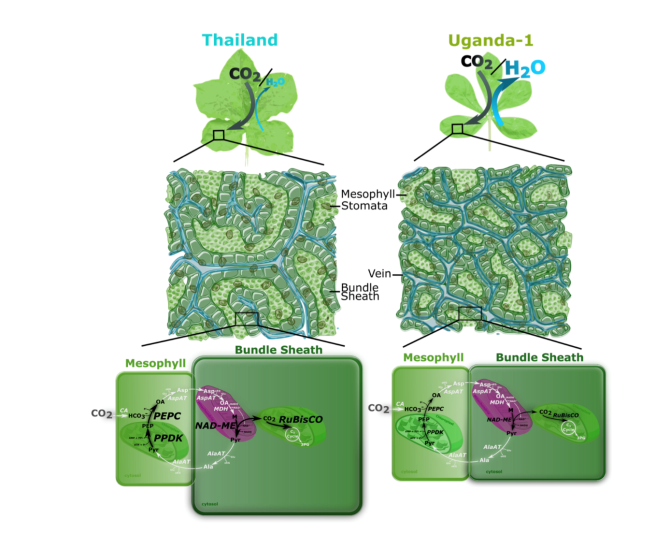Project
Natural variation within a species for traits underpinning C4 photosynthesis
Almost all green plants, including most crop plants, fix carbon-dioxide using the so called C3 pathway. The C3 pathway is efficient under ideal conditions but is much less so under adverse conditions like drought. Remarkably, a modified photosynthetic pathway, called the C4 pathway, has evolved over sixty independent times in flowering plants.
Major differences between C3 and C4 plants involve not only biochemical and cell biology modifications, but also to leaf morphology including to vein spacing and the formation of bundle sheathes (so called Kranz anatomy). While our understanding of the regulatory mechanisms underlying C4 metabolism is growing, there is still a significant gap in tools to expand our understanding of the regulation behind Kranz anatomy and the C4 biochemical cycle. A greater understanding could open up a pathway to engineer C4 photosynthesis into C3 crops could substantially increase their yield. Forward genetics has provided limited insight into the mechanistic basis of these properties, and there have been no reports of significant quantitative intra-specific variation of C4 attributes that would allow trait mapping.
Here, we show that accessions of the C4 species Gynandropsis gynandra (a leafy green vegetable crop) collected from locations across Africa and Asia exhibit natural variation in key characteristics of C4 photosynthesis. Variable traits include bundle sheath size and vein density, gas exchange parameters, and carbon-isotope discrimination associated with the C4 state. Abundance of transcripts encoding core enzymes of the C4 cycle also showed significant variation. Traits relating to water use showed more quantitative variation than those associated with carbon assimilation. We propose that variation in these traits likely adapted the hydraulic system for increased water use efficiency rather than improving carbon fixation, indicating that selection pressure may drive C4 diversity in G. gynandra by modifying water use rather than photosynthesis. The accessions analyzed can be easily crossed and produce fertile offspring. Our findings therefore indicate that natural variation within this C4 species is sufficiently large to allow genetic mapping of key C4 traits and regulators.
